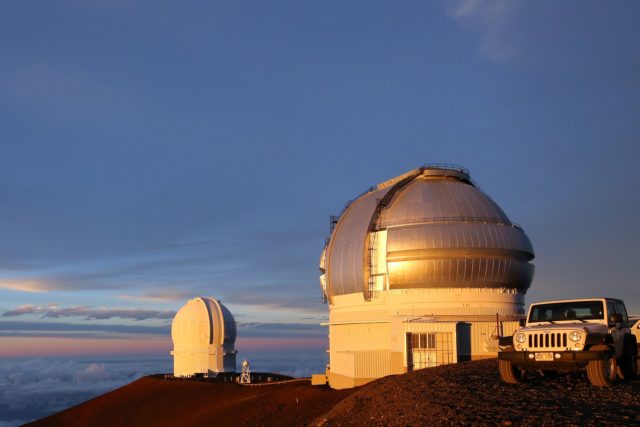Speckles Solve the Secrets of twin Suns

Astronomers have been working with data gathered by the Kepler and K2 missions for more than a decade. Even now, twelve years after the Kepler space telescope’s initial launch, they are coming up with innovative techniques to map the stars in the night sky. In this time, several large discoveries have been made about exoplanets, one of which is that around half of all discovered exoplanets orbit stars existing in a solar system with two stars. However, there is a question that comes with this realisation – How do they find out which of the two stars an exoplanet is orbiting in one of these systems? Steve B. Howell and his team at the NASA Ames Research Centre in California may have found the solution and it all comes down to “speckle interferometry”, a high-res imaging technique that has existed since the 70’s.
Between the launch of the Kepler spacecraft in 2009 until its retirement by NASA in 2018, the space telescope discovered more than 2600 planets in solar systems outside of our own, with follow-up missions helping to boost that number to over 4000.1

Image by Justinite on Pixabay
We call these distant planets “exoplanets” and studying them has kept scientists in the field busy for years. Howell and his team were one such group of scientists trying to tackle a problem of an astronomical scale.
Detecting an exoplanet can be quite simple. A satellite is used to measure light coming from a distant star, and when a dip in light levels coming from a star occurs regularly, it means an exoplanet orbiting it has passed between us and the star. Researchers can then tell a lot about an exoplanet from this information such as estimating the size of an exoplanet using the radius of the star it orbits and how far the light level drops.2
When a solar system has two stars at its center, it is called a binary system. Howell stated “About one half of all exoplanets orbits a star residing in a binary system, yet, until now, we were at a loss to robustly determine which star hosts the planet”. It can be difficult, and sometimes almost impossible, to work out information about an exoplanet in these systems because we don’t know which star it is orbiting. The situation can get worse based on how close the two stars are or how similar they are in size. Thus, to try and solve this problem, Howell’s team used a machine called Alopeke, a massive telescopic camera that takes pictures at incredibly fast shutter speeds of less than a tenth of a second.3
In essence, the Alopeke imager takes pictures at high shutter speeds to ensure outside influences, like the Earth’s atmosphere, do not diminish the picture quality.
The result of these come out as “speckles” and studying these images helped astronomers determine whether a light in the night sky originated from a single star or a binary pair. Speckle imaging has already helped identify a number of the binary pairs and exoplanets that we know of, but there was still the orbit issue we mentioned earlier; and that’s where the NASA Ames team came in. The team aimed to demonstrate that speckle imaging was the solution to working out which star an exoplanet in the binary star Kepler-13 solar system was orbiting, and their work paid off. Their analysis of data gathered by Alopeke showed a huge drop in light levels when the exoplanet passed by Kepler-13A, the slightly brighter star of the pair. Speckle analysis only allows light in for less than a second, and the team studied around 1000 of these tiny light exposures taken over the course of 4 hours. This timeframe is very short compared to how long it would normally take to examine the orbit of an exoplanet, and the amazing success of the team’s endeavours doesn’t stop there.
Just like how our Kepler-13 system has twin stars, the Alopeke instrument has its own twin called Zorro, another huge instrument at the Gemini-South observatory located in the mountains of Chile. When used in tandem, Alopeke and Zorro can provide measurements of both high and low wavelengths of light. The how will be discussed later, but this ability helped the Ames team discover a secondary use of speckle imagery that no one had realised. Prior to the team’s work, it was entirely unknown what the make-up of this exoplanet orbiting the stars of Kelper-13 was. But with their work, they were able to almost confirm it to be a huge gas giant like our own Jupiter, one with a very hot atmosphere most likely due to radiation. This was clear because the light levels witnessed a much larger drop at low wavelengths of light than at higher ones, meaning the exoplanet had to be better at blocking out blue light than red. “Combined with Gemini’s large primary mirror, Alopeke has real potential to make even more significant exoplanet discoveries by adding another dimension to the search” said Andrew Stephens, a scientist at the Gemini Observatory who aided the Ames team in their work.
So, Howell and his team may have not only proved that speckle imaging is a reliable way to solve the problem of exoplanet orbits in binary systems, but also discovered a revolutionary new way to analyse exoplanets all over the universe. Speckle imaging could be the fast and reliable future of exoplanet analysis. As Chris Davis of the National Science Foundation claimed, “this dual win has elevated the importance of instruments like Alopeke in exoplanet research”, and the work of Steven Howell and others at the NASA Ames research centre stands as proof of the potential it has.
More information about the ‘Alopeke and Zorro instruments and the Gemini Observatories can be found at The Gemini Observatory (Noir Lab). Further research from the NASA Ames research centre can be found on the NASA website.
This article was specialist edited by Deep Bandivadekar and copy-edited by Miriam Scarpa










